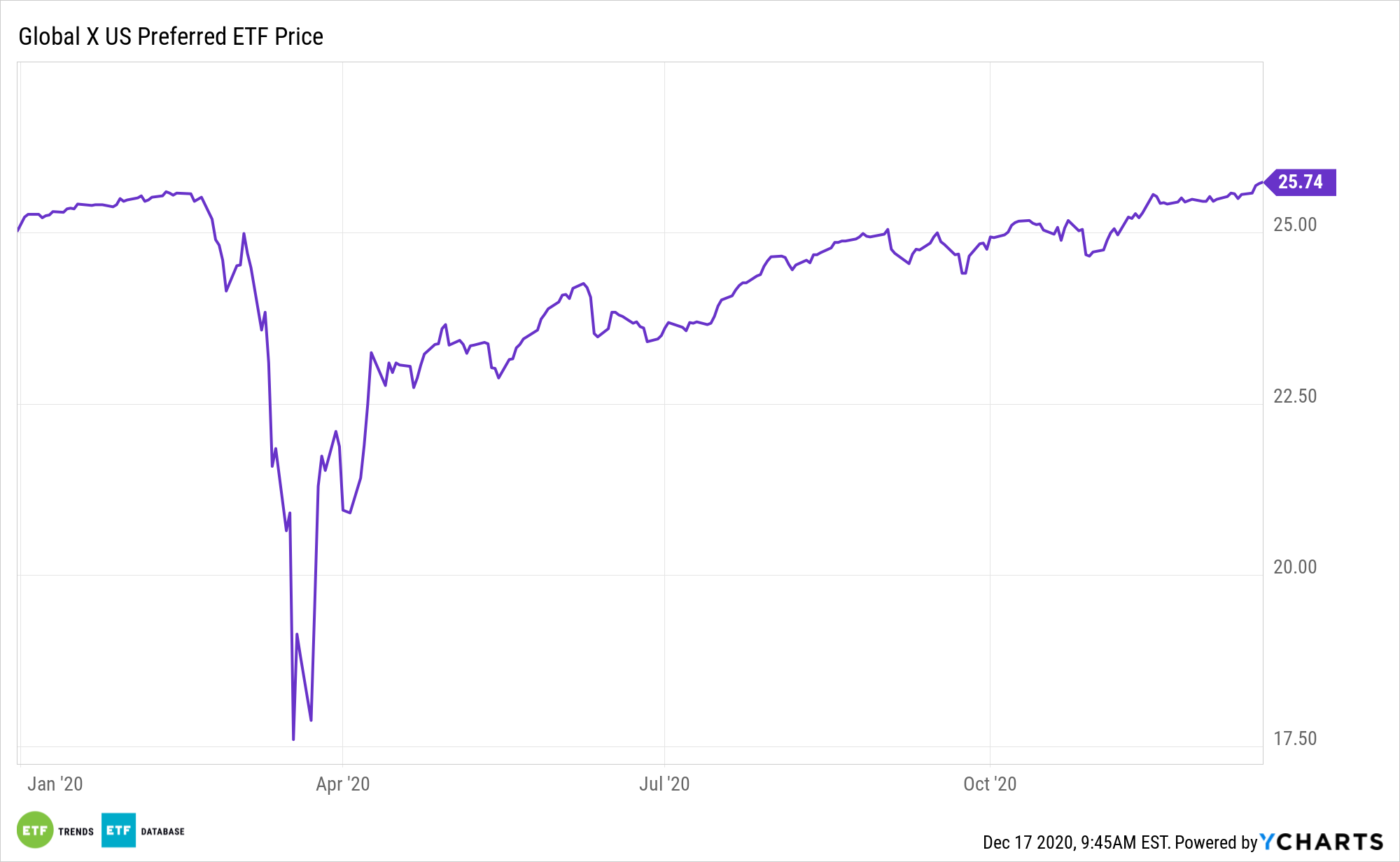Preferreds Stock ETFs: An Asset Class to Bridge the Divide(nds)

Investors looking for an income-generating asset class that can bridge the divide between dividend stocks and traditional fixed income instruments may want to consider preferred stocks and exchange traded funds such as the Global X U.S. Preferred ETF (Cboe: PFFD).
Preferred stocks are a type of hybrid security that show bond- and equity-like characteristics. The shares are issued by financial institutions, utilities, and telecom companies, among others. Within the securities hierarchy, preferreds are senior to common stocks but junior to corporate bonds. Additionally, preferred stocks issue dividends on a regular basis, but investors don’t usually enjoy capital appreciation on par with common shares.
PFFD’s underlying index includes different categories of preferred stock, such as floating, variable and fixed-rate preferreds, cumulative and non-cumulative preferreds, and trust preferreds. Components of the Underlying Index primarily include financials, real estate, telecommunications, and utilities companies.

Preferred Perks: Dividends, Tax Benefits, and More
Yields on preferreds are often one reason income investors are drawn to the asset class. On that front, PFFD doesn’t disappoint.
“Due to their relatively small size, preferreds can often be overlooked by portfolio managers. But preferreds have unique characteristics, often contributing yield, potential tax benefits, and diversification to investors,” notes Global X analyst Rohan Reddy. “For example, fixed rate preferreds currently yield 4.58%, higher than REITs and emerging market (EM) bonds.”
Often lost in the preferred conversation are the tax benefits offered with these securities.
“Yet the tax benefits associated with preferreds can often make this yield even more appealing. While bond and REIT income are taxed as ordinary income, preferred yield is often treated as qualified dividend income (QDI),” says Reddy. “This difference can be material as ordinary income can be taxed at the highest marginal rate of 37%, while qualified dividends are taxed at a maximum of 23.8%.”
Income investors have looked to preferred stock ETFs in their portfolios for a number of reasons. For instance, the asset class offers stable dividends, does not come with taxes on qualified dividends for those that fall into the 15% tax bracket or lower, is senior to common stocks in the event liquidation occurs, is less volatile than bonds, and provides dividend payments before common shareholders.
“The historically low yield environment is putting substantial pressure on income-oriented investors to consider alternative asset classes for potential yield and diversification. Preferreds can be a [potent] tool for achieving greater yield potential due to their junior status on the capital structure. In addition, their relatively small representation in the global bond market and historically low correlation with treasuries allows them to offer diversification to portfolios,” concludes Reddy.
Read more at: https://www.nasdaq.com/articles/preferreds-stock-etfs%3A-an-asset-class-to-bridge-the-dividends-2020-12-17
The views and opinions expressed herein are the views and opinions of the author and do not necessarily reflect those of Nasdaq, Inc.
By: ETF Trends



